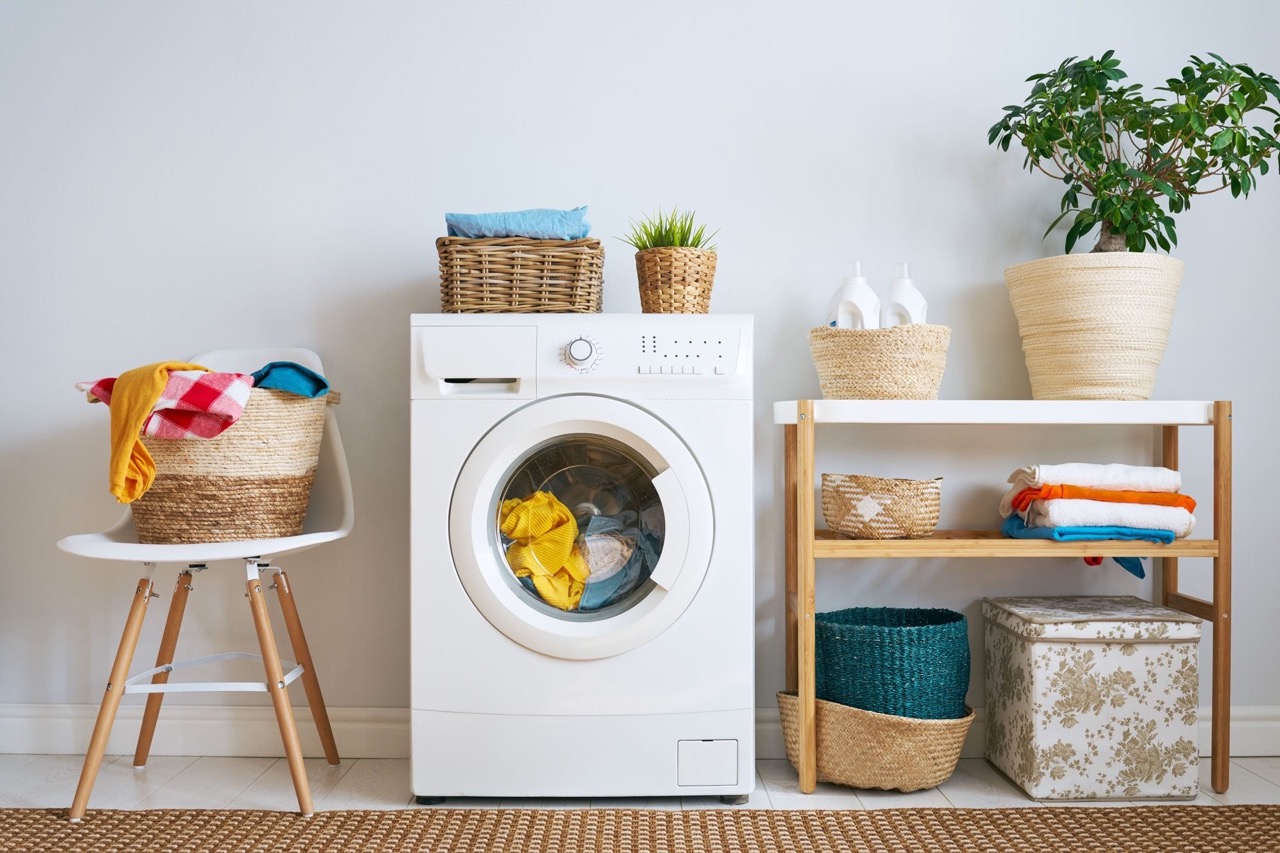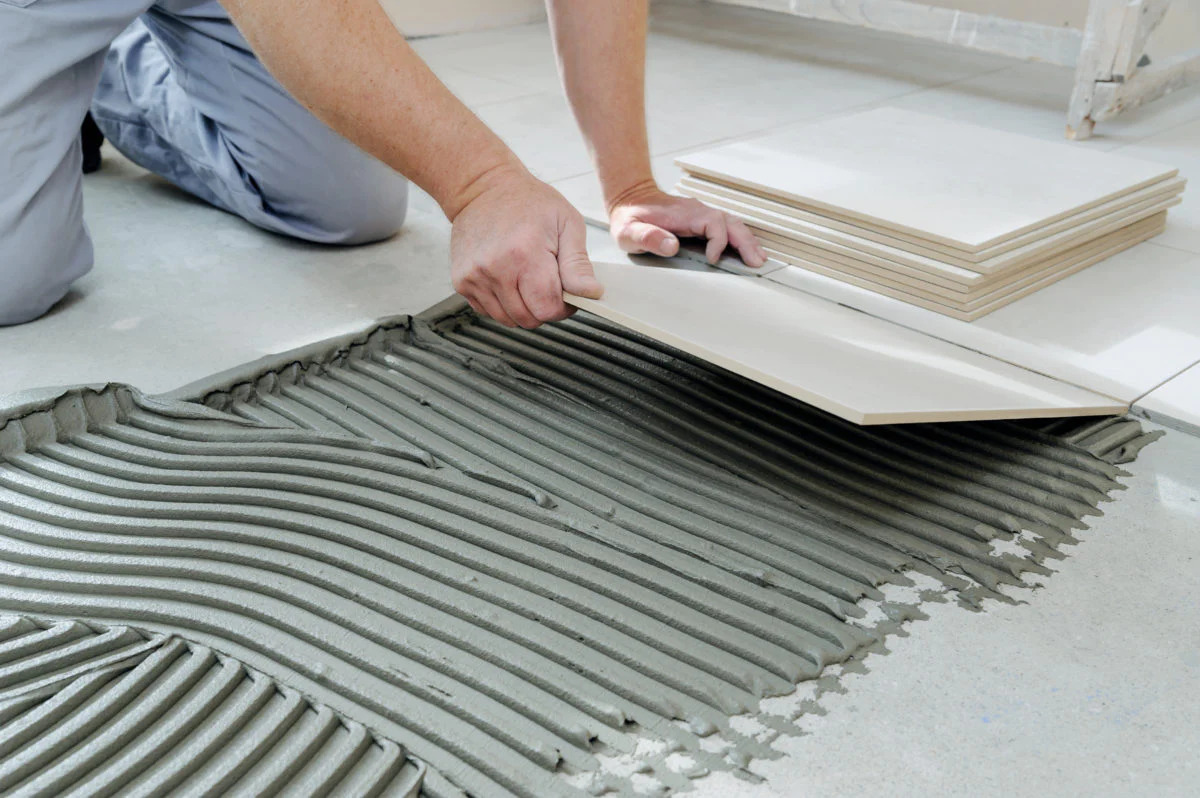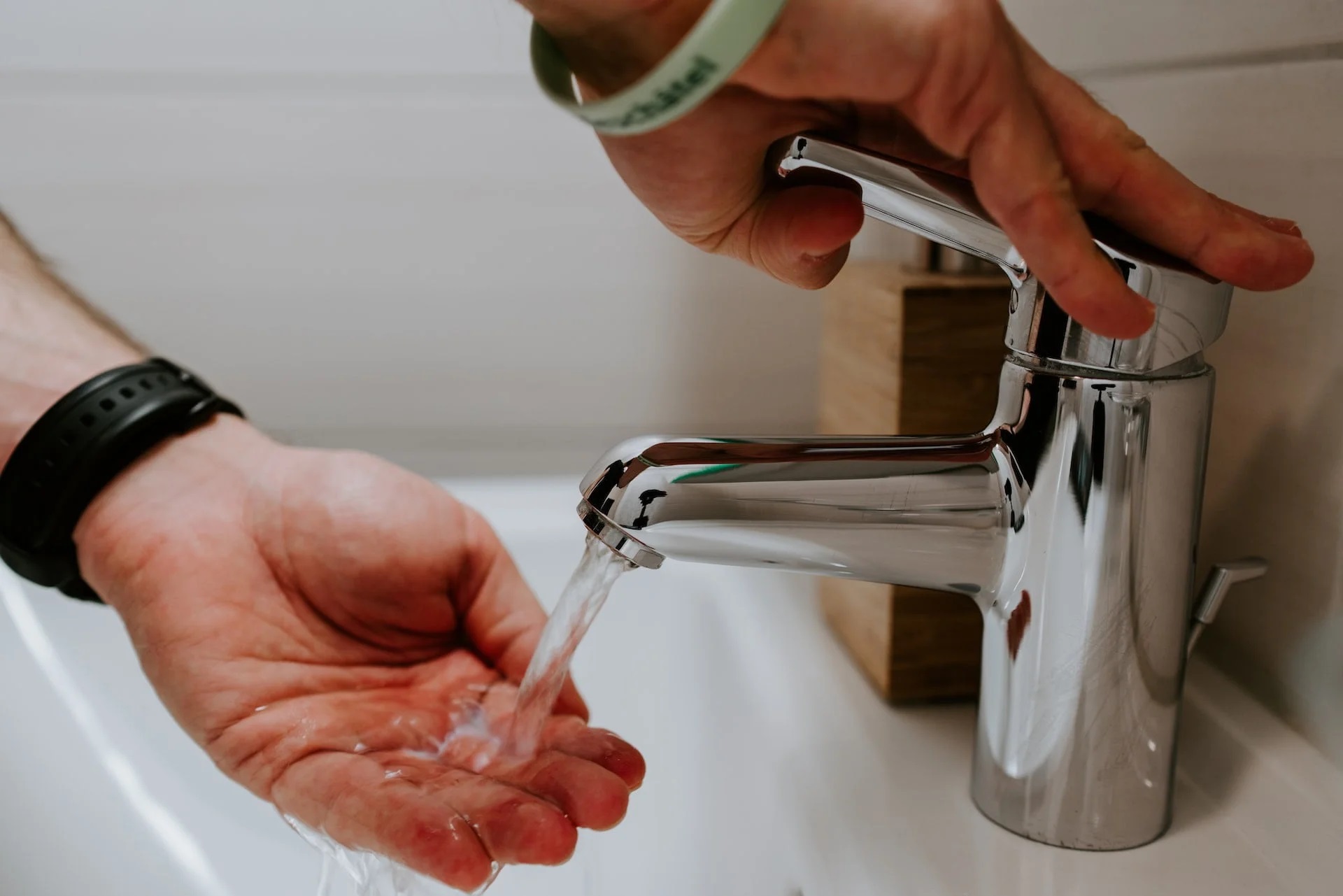Home>Interior Design>6 Ways To Save Money On Your Laundry: Top Expert Tips


Interior Design
6 Ways To Save Money On Your Laundry: Top Expert Tips
Modified: October 21, 2024
Discover 6 expert ways to save money on your laundry and enhance your interior design with these top tips. Cut costs without compromising on style!
(Many of the links in this article redirect to a specific reviewed product. Your purchase of these products through affiliate links helps to generate commission for Storables.com, at no extra cost. Learn more)
Introduction
Doing laundry is a necessary chore that most of us have to deal with on a regular basis. However, it doesn’t have to be an expensive task. With a few simple tweaks to your laundry routine, you can save money without compromising on cleanliness or the quality of your clothes. In this article, we will explore six expert tips that can help you cut down on laundry costs. From choosing the right washing machine to making your own laundry products, these tips are easy to implement and can lead to significant savings over time.
So, if you’re ready to lighten the load on your wallet while still maintaining fresh and clean clothes, let’s dive into these cost-saving strategies.
Key Takeaways:
- Save money on laundry by choosing an energy-efficient washing machine, optimizing water temperature, and using the correct amount of detergent. Air drying, skipping the dry cleaner, and making DIY laundry products also lead to significant cost savings.
- Implementing expert tips such as air drying, skipping the dry cleaner, and making DIY laundry products can save money and promote environmental sustainability. These strategies offer cost-effective and eco-friendly alternatives to traditional laundry practices.
Choose the Right Washing Machine
When it comes to saving money on your laundry, the first step is to invest in a washing machine that is not only efficient but also suits your specific needs. There are several factors to consider when choosing the right washing machine:
- Energy Efficiency: Look for washing machines that have high energy efficiency ratings. These machines are designed to use less water and electricity, which can result in lower utility bills over time. Look for the ENERGY STAR label when shopping for a new washing machine.
- Capacity: Consider the size of your household and the amount of laundry you typically do. A washing machine with a larger capacity will allow you to wash more clothes in a single load, reducing the number of times you need to run the machine and ultimately saving on water and energy usage.
- Settings and Features: Opt for a washing machine that offers a range of settings and features, such as different wash cycles and temperature options. This will give you more control over your laundry and allow you to choose the most energy-efficient settings for each load.
By choosing a washing machine that is energy-efficient and suits your needs, you can save money on your utility bills in the long run. Additionally, some washing machines come with extended warranties or service packages, which can provide added peace of mind and save you money on repairs or maintenance.
Remember, investing in a quality washing machine upfront may have a higher upfront cost, but the savings in energy and water consumption can make it a worthwhile long-term investment.
Optimize Your Water Temperature
One of the easiest ways to save money on your laundry is by optimizing the water temperature for each load. Many people default to using hot water for all their laundry, but this can be unnecessary and costly. Here’s how you can make smarter choices when it comes to water temperature:
- Cold Water for Most Loads: The majority of your laundry, including everyday clothing and linens, can be washed effectively in cold water. Cold water not only saves on energy costs but also helps preserve the color and quality of your clothes. Using cold water can reduce your energy consumption by up to 90% compared to using hot water for every load.
- Warm Water for Stains and Heavily Soiled Items: For stains and heavily soiled items, it’s still beneficial to use warm water. Warm water helps to break down stains and dirt more effectively. However, it’s essential to check the care labels on your clothing to ensure they can withstand warm water washing.
- Hot Water for Specific Items: Reserve hot water for specific items that require it, such as bedding and towels. Hot water can help sanitize these items effectively and remove allergens or germs.
Adjusting your water temperature can lead to significant savings on your energy bills. By utilizing colder temperatures for the majority of your laundry loads, you can reduce your energy consumption and cut down on costs without sacrificing cleanliness.
It’s also important to note that modern washing machines are designed to work efficiently with cold water, using advanced detergents that are specifically formulated to perform well in lower temperatures. So, don’t be afraid to give cold water washing a try!
Use the Correct Amount of Detergent
Using too much detergent not only wastes money but can also leave residue on your clothes, leading to a decrease in their lifespan. On the other hand, using too little detergent may result in clothes that aren’t thoroughly cleaned. Finding the right balance is key to saving money on laundry while keeping your clothes fresh and clean. Here are some tips to help you use the correct amount of detergent:
- Follow the Manufacturer’s Guidelines: Check the instructions on your detergent bottle or box to determine the recommended amount of detergent for each load. Most detergents provide guidelines based on the size of the load and the level of dirtiness.
- Don’t Overfill the Cap: Many detergent caps are designed with measurement lines, making it easy to pour the right amount. Avoid the temptation to fill the cap to the brim, as this is often more than necessary. Stick to the recommended measurements to achieve optimal cleaning results.
- Consider Water Hardness: If you live in an area with hard water, you may need to adjust the amount of detergent you use. Hard water requires more detergent to create suds and effectively clean your clothes. If you’re unsure about the water hardness in your area, you can purchase water hardness test strips or consult your local water supplier.
- Pre-treat Stains: Instead of using extra detergent to tackle tough stains, consider pre-treating them with a stain remover or a mixture of detergent and water. This targeted approach can help minimize the amount of detergent you use in the main wash cycle.
Using the correct amount of detergent ensures that your clothes are clean while preventing unnecessary waste. By following the manufacturer’s guidelines and being mindful of water hardness and stain removal techniques, you can save money on detergent costs while still achieving optimal cleaning results.
Remember that it’s always better to err on the side of using slightly less detergent rather than too much. You can always adjust the amount for future loads based on how clean your clothes feel and smell after each wash.
Wash full loads of laundry to maximize the efficiency of your washing machine and save on water and energy costs.
Air Dry Whenever Possible
Drying your clothes in a tumble dryer can consume a significant amount of energy, leading to higher electricity bills. To save money and reduce your environmental impact, consider air drying your laundry whenever possible. Here are some tips to help you effectively air dry your clothes:
- Outdoor Drying: If weather permits, take advantage of the natural breeze and sunlight by hanging your clothes outdoors. Invest in a clothesline or use a drying rack to maximize drying space. Outdoor drying not only saves on energy costs but also gives your clothes a fresh, outdoor scent.
- Indoor Drying: When outdoor drying is not feasible, opt for indoor drying methods. Set up a drying rack in a well-ventilated area, such as near an open window or using a dehumidifier. Alternatively, use a retractable clothesline that can be pulled across a room, creating extra hanging space.
- Tumble Dryer Alternatives: In situations when you need your clothes to dry quickly, consider using alternative methods such as a garment steamer or a handheld clothes dryer. These devices use less energy than traditional tumble dryers and can be more cost-effective in the long run.
- Separate Heavier Items: When air drying, separate heavier items like jeans and towels from lighter fabrics. This will help your clothes dry more evenly and prevent items from taking longer to dry than necessary.
Air drying not only saves money on energy costs but also helps prolong the lifespan of your clothes. Heat from tumble dryers can cause fabrics to shrink, fade, or become damaged over time. By air drying, you can preserve the quality and color of your garments, saving you money by extending their lifespan.
Remember to check your clothing labels for specific drying instructions, as some items may require delicate drying or be best suited to tumble drying. By air drying whenever possible, you can enjoy cost savings while keeping your clothes in top condition.
Read more: 6 Clever Ways To Upcycle Leftover Decorating Materials: To Save Money And Be More Eco-friendly
Skip the Dry Cleaner
When it comes to maintaining the cleanliness and appearance of your clothes, many people automatically turn to the dry cleaner. However, professional dry cleaning can be expensive and may not always be necessary for every item of clothing. Here are some alternatives to help you save money on dry cleaning:
- Read and Follow Care Instructions: Before rushing to the dry cleaner, carefully read the care instructions on your clothing tags. Many garments that are labeled as “dry clean only” can actually be safely washed at home using gentle cycles or handwashing techniques. By following the proper care instructions, you can avoid unnecessary trips to the dry cleaner.
- Spot Clean Stains: If you have a garment with a small stain, try spot cleaning it instead of sending it to the dry cleaner. Use a mild detergent and a clean cloth or sponge to gently dab the stain until it lifts. Be sure to test any cleaning solution on a small, inconspicuous area of the fabric first to ensure it doesn’t cause discoloration.
- Use At-Home Dry Cleaning Kits: Consider investing in at-home dry cleaning kits, which are readily available in stores or online. These kits typically include special cleaning cloths and a bag to place your clothes in. Follow the instructions provided to refresh and deodorize your clothes without the need for a professional dry cleaner.
- Hang and Steam: For items that just need a quick refresh, consider hanging them in a steamy bathroom while you take a shower. The steam can help release wrinkles and freshen up your clothes. Alternatively, you can invest in a handheld garment steamer for a more targeted approach to de-wrinkling and freshening garments.
By skipping unnecessary trips to the dry cleaner and exploring alternative methods, you can save a significant amount of money over time. However, it’s important to note that certain delicate or heavily soiled items may still require professional dry cleaning. Use your judgment and consider the fabric, construction, and condition of the garment before deciding on the best cleaning method.
Remember, with proper care and maintenance, you can extend the life of your garments and save money on dry cleaning expenses.
Make Your Own Laundry Products
Another effective way to save money on your laundry is by making your own laundry products. Many commercial laundry detergents, fabric softeners, and stain removers can be expensive and filled with chemicals. By creating your own products using simple, affordable ingredients, you can save money while having more control over what goes onto your clothes. Here are a few DIY laundry product ideas:
- Homemade Laundry Detergent: You can easily make your own laundry detergent using a few basic ingredients such as washing soda, borax, and a natural bar soap. There are numerous recipes available online that provide step-by-step instructions on how to create effective and budget-friendly laundry detergent.
- Fabric Softener: Instead of purchasing commercial fabric softeners, you can create your own using vinegar, baking soda, and essential oils. These natural ingredients help to soften fabrics without the use of harsh chemicals.
- Stain Removers: For stubborn stains, instead of buying expensive stain removers, you can make your own using common household items. For example, a mixture of hydrogen peroxide and dish soap can be effective in removing tough stains.
By making your own laundry products, you not only save money but also reduce your environmental impact. Many store-bought laundry products come in plastic packaging and contain harsh chemicals that can be harmful to the environment. DIY alternatives allow you to use eco-friendly ingredients and reuse containers, promoting a more sustainable approach to laundry.
Before making your own laundry products, be sure to research and follow reliable recipes. It’s also important to note that some homemade products may not work as effectively on certain stains or fabrics. Experimenting and finding the right combination for your specific needs may require some trial and error.
With a little creativity and resourcefulness, making your own laundry products can be a fun and cost-effective way to care for your clothes while reducing your household expenses.
Conclusion
Laundry is a necessary chore, but it doesn’t have to be a budget-draining task. By implementing these expert tips, you can save money on your laundry routine without compromising cleanliness or garment longevity.
Choosing the right washing machine, optimizing your water temperature, using the correct amount of detergent, air drying whenever possible, skipping the dry cleaner when feasible, and making your own laundry products are all effective strategies to reduce laundry expenses.
Not only will these tips save you money in the long run, but they also promote environmental sustainability and healthier laundry practices. By being mindful of your choices and taking proactive steps, you can enjoy fresh and clean clothes while keeping more money in your wallet.
Remember that everyone’s laundry needs and circumstances may vary, so feel free to adapt these tips to suit your specific situation. Whether you’re a busy parent, a college student on a tight budget, or simply looking to minimize your ecological footprint, these cost-saving strategies can benefit everyone.
So, the next time you tackle a load of laundry, put these tips into practice and enjoy the financial savings and peace of mind that comes with a more economical and sustainable laundry routine.
Frequently Asked Questions about 6 Ways To Save Money On Your Laundry: Top Expert Tips
Was this page helpful?
At Storables.com, we guarantee accurate and reliable information. Our content, validated by Expert Board Contributors, is crafted following stringent Editorial Policies. We're committed to providing you with well-researched, expert-backed insights for all your informational needs.















0 thoughts on “6 Ways To Save Money On Your Laundry: Top Expert Tips”